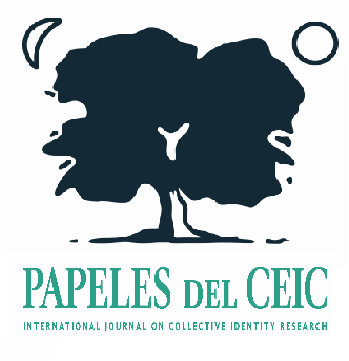The body and everyday dangers: origin and consolidation of the hypervigilant individual in collective imagination
##plugins.themes.bootstrap3.article.main##
##plugins.themes.bootstrap3.article.sidebar##
Published
03-03-2018
Raquel Taranilla
Abstract
In the tension between security and freedom, which is the core of advanced liberalism, the invention of risk plays an essential role, not only because it solves dilemmas of public governance, but also because it has permeated in the private sphere of individuals, making emerge a new subjectivity: the hypervigilant individual. This theoretical article addresses how, within the culture of danger, the so-called actuarial reason (which uses statistics in the calculation of risks) transforms the medical gaze to the pathological fact, what in turn affects the way the individuals understand their own body and the dangers that threaten it. This new subjectivity demands prudent behaviors, which does not compromise the safety of the body, and often it also requires the involvement in disease prevention and health promotion. In addition, actuarial medicine breaks up the body and computes the specific risks of each fragment, what prompts the individual to self-conceptualize as a risk map. Hypervigilance has become fixed in the collective imagination, so it may be identified in contemporary cultural productions. Lydia Davis' narrative provides illustrative examples of the hypervigilant individual.
How to Cite
Taranilla, R. (2018). The body and everyday dangers: origin and consolidation of the hypervigilant individual in collective imagination. Papeles De Identidad, 2018(1), papel 185. https://doi.org/10.1387/pceic.17727
##plugins.themes.bootstrap3.article.details##
Keywords
governance of the body, risk, subjectivity, hypervigilance, collective imagination
Section
Single Topic Issues
Papeles del CEIC is distributed under the licence Creative Commons Reconocimiento-NoComercial-SinObraDerivada 3.0 España (CC BY-NC-ND 3.0 ES)
Usted es libre de:
- copiar, distribuir y comunicar públicamente la obra
Bajo las condiciones siguientes:
- Reconocimiento — Debe reconocer los créditos de la obra de la manera especificada por el autor o el licenciador (pero no de una manera que sugiera que tiene su apoyo o apoyan el uso que hace de su obra).
- No comercial — No puede utilizar esta obra para fines comerciales.
- Sin obras derivadas — No se puede alterar, transformar o generar una obra derivada a partir de esta obra.
Entendiendo que:
- Renuncia — Alguna de estas condiciones puede no aplicarse si se obtiene el permiso del titular de los derechos de autor
- Dominio Público — Cuando la obra o alguno de sus elementos se halle en el dominio público según la ley vigente aplicable, esta situación no quedará afectada por la licencia.
- Otros derechos — Los derechos siguientes no quedan afectados por la licencia de ninguna manera:
- Los derechos derivados de usos legítimos u otras limitaciones reconocidas por ley no se ven afectados por lo anterior.
- Los derechos morales del autor;
- Derechos que pueden ostentar otras personas sobre la propia obra o su uso, como por ejemplo derechos de imagen o de privacidad.
- Aviso — Al reutilizar o distribuir la obra, tiene que dejar bien claro los términos de la licencia de esta obra.
The author can use his/her article freely always indicating that it has been published in Papeles del CEIC. International Journal on Collective Identity Research. Any re-edition of the article must be approved by the journal editorial team.


 http://orcid.org/0000-0003-1996-9412
http://orcid.org/0000-0003-1996-9412